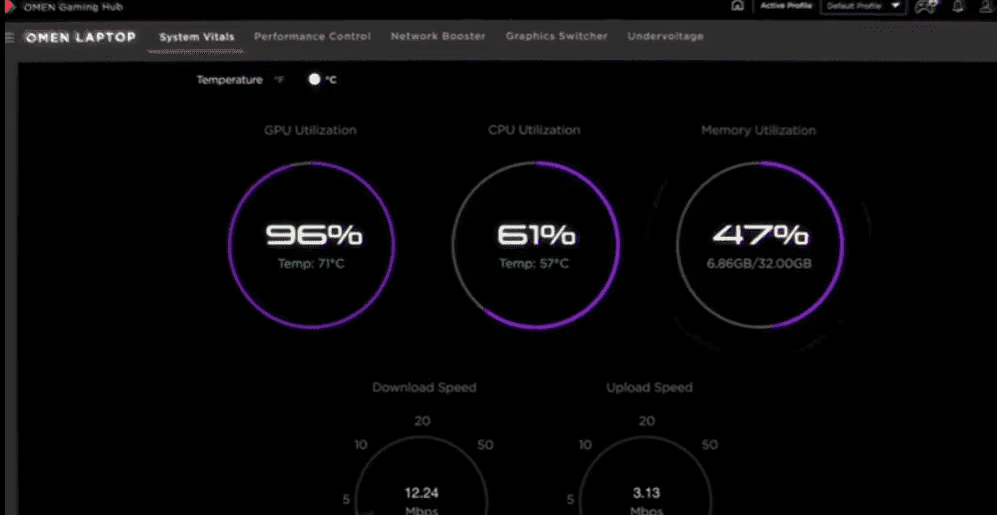Thank you for visiting the AUSTRALIA HP Store
-
Contact Us
CONTACT USCall us
- Sales
- 1300 540 516
- Technical support
- 13 23 47
Exc. public holidays
Chat with us- Our specialist are here to help
- Live Product Demo
- Sales
- 61288061500 (WhatsApp)
-

- Post Sales
- 61288061700(WhatsApp)
Exc. public holidays
Live product demo
Submit feedback We value your opinion! - My Account
HP Instant Ink vs. Traditional Ink Cartridges: Which Is Right for You?


Selecting the right ink solution for your printing needs is more than a matter of cost - it's about aligning with your specific printing habits, ensuring efficiency, and maintaining the quality of your prints. In this arena, two primary options stand out: HP Instant Ink and traditional ink cartridges. Each offers distinct advantages and caters to different requirements, from the occasional document printer to the high-volume user.
In this article, we examine HP Instant Ink - a subscription-based service that promises convenience and cost predictability - and traditional ink cartridges, which provide flexibility and immediacy. By understanding the benefits and limitations of each, you can make a choice that suits your current needs and adapts to your future printing activities. Whether you're considering the environmental impact, evaluating cost-effectiveness, or prioritising ease of use, our guide aims to illuminate the path to the most suitable printing solution for you.
HP Instant Ink explained
HP Instant Ink represents a shift from the conventional method of purchasing ink cartridges as needed. This innovative service operates on a subscription basis, where users pay a monthly fee based on the number of pages they print, not the amount of ink they use. This model is designed to offer convenience and cost savings, especially for those who print regularly. Upon enrollment, the printer monitors your ink levels and automatically orders new cartridges before you run out, ensuring you never face the inconvenience of interrupted printing sessions.
The pricing strategy of HP Instant Ink is designed with flexibility and clarity at its core, presenting a variety of plans to accommodate diverse printing demands. Ranging from a minimal ink plan of 10 pages per month for $2.99 to a voluminous option of 700 pages for $44.99 monthly, there's a plan for every type of user. Each plan includes ink, shipping, and recycling costs, scaling in price with the monthly page limit. For instances where printing exceeds the set monthly allowance, additional sets of pages are conveniently available for a nominal fee - 10 pages for most plans and 15 pages for the 700-page plan, ensuring users only pay for their exact needs. Moreover, the flexibility extends to unused pages, which can roll over to the subsequent month, subject to plan details.
One of HP Instant Ink's most appealing aspects is its convenience. The automatic ink delivery system means you no longer have to monitor ink levels or make emergency trips to the store. This can be particularly beneficial for businesses or remote workers who rely on their printers and cannot afford downtime. Another significant advantage is cost predictability. With a fixed monthly fee based on pages printed rather than the ink used, users can better budget their printing costs without worrying about the price of individual cartridges. Additionally, the service promotes environmental sustainability by including prepaid envelopes for returning used cartridges for recycling, thereby reducing waste.
Traditional ink cartridges
The conventional method of purchasing ink cartridges involves buying them as needed, either from physical stores or online. This approach has been the standard for printer maintenance for decades. Users purchase cartridges specific to their printer model and replace them once the ink runs low or is depleted. This method offers flexibility, allowing users to buy ink only when necessary, but it can also lead to situations where one may run out of ink unexpectedly, leading to inconvenience and potential delays in printing tasks.
The upfront costs of traditional ink cartridges vary significantly based on the printer model, brand, and ink type (e.g., black vs. colour, standard vs. high yield). Generally, individual ink cartridges can be expensive, making the cost per page higher than subscription services like HP Instant Ink. Additionally, prices can fluctuate based on retailer, availability, and whether one opts for genuine cartridges from the printer manufacturer or compatible alternatives from third-party suppliers. While third-party cartridges offer a cost-saving advantage, they may not always provide the same quality or reliability as OEM (original equipment manufacturer) cartridges.
Printing frequency and volume
When choosing between HP Instant Ink and traditional ink cartridges, it's crucial to consider your printing frequency and volume. Traditional ink cartridges might be more cost-effective for users who print infrequently or in small volumes, as the upfront cost could be lower than paying a monthly subscription fee. However, a subscription service like HP Instant Ink can offer significant savings for those who print regularly or in large volumes. The service adjusts to your printing needs, ensuring that you only pay for what you use, and can be particularly beneficial for users who experience fluctuating printing needs.
For users who print occasionally, traditional ink cartridges might make more sense to avoid the ongoing costs of a subscription. On the other hand, moderate to heavy printers who print hundreds of pages a month will likely find better value in HP Instant Ink, where the cost per page can be significantly lower, and the convenience of automatic ink replenishment can save time and hassle.
Environmental impact
HP Instant Ink emphasises environmental sustainability by incorporating a robust recycling program into its subscription service. This initiative ensures that used cartridges are returned and recycled, effectively reducing waste and promoting the circular economy. By automating the ink supply based on actual usage, HP Instant Ink also aims to minimise ink waste, ensuring that cartridges are only replaced when necessary.
Traditional ink cartridges, while offering recycling programs via manufacturers and third-party organisations, often rely on user participation for environmental benefits. This means the effectiveness of recycling and waste reduction largely depends on consumer action. Although these cartridges can be recycled, the process isn't as streamlined or mandatory as with HP Instant Ink, potentially leading to less efficient recycling rates.
Environmental footprint comparison
Comparing the environmental footprints of HP Instant Ink and traditional cartridges reveals distinct differences. With its automatic delivery and built-in recycling, HP Instant Ink's model likely results in a lower overall environmental impact. This system reduces cartridge production and disposal frequency, directly contributing to less waste. Additionally, by providing prepaid recycling envelopes and making cartridge return effortless, HP Instant Ink ensures a higher recycling rate.
In contrast, the environmental footprint of traditional cartridges can vary more significantly. While the option to recycle exists, the success of these programs depends on user engagement and the availability of recycling facilities. Users who opt for third-party cartridges may also face variability in the environmental standards of these products, potentially increasing their ecological impact.
HP Instant Ink offers a more environmentally friendly approach by streamlining recycling and reducing waste. Traditional cartridges, though capable of being part of a sustainable cycle, require more proactive effort from consumers to achieve similar environmental benefits. This comparison underscores the importance of considering sustainability when choosing between HP Instant Ink and traditional ink solutions.
Compatibility and printer requirements
HP Instant Ink requires specific HP printer models capable of internet connectivity to communicate ink levels for timely replenishment. Noteworthy compatible HP printer series include:
-
HP ENVY: Ideal for home or small office, models like the ENVY 4520 and ENVY 5055 are Instant Ink ready.
-
HP OfficeJet: Designed for higher volume printing, with models such as the OfficeJet 3830 and OfficeJet Pro 6978.
-
HP DeskJet: Suitable for everyday home printing, such as the DeskJet 2622.
Verify your printer’s compatibility with HP Instant Ink through HP’s website or customer support. If your printer isn’t compatible and you're considering Instant Ink, you might need to upgrade. Evaluate whether the benefits of Instant Ink, including potential savings and enhanced printing efficiency, outweigh the cost of a new printer. This decision should factor in your printing volume, budget, and the value you place on convenience and sustainability.
Transitioning to HP Instant Ink or continuing with traditional cartridges involves assessing your printer’s compatibility and printing needs. Choosing equipment that aligns with your preferences allows you to enjoy a seamless, cost-effective, high-quality printing experience tailored to your habits and budget.
User experience
The user experience with HP Instant Ink is streamlined and user-friendly, from easy online subscription setup to automatic ink delivery directly to your door. Traditional ink cartridges require a more hands-on approach to monitor ink levels and replace cartridges, which can be less convenient for some users.
HP Instant Ink subscribers benefit from dedicated customer support for subscription or ink delivery issues. Users of traditional ink cartridges rely on standard customer service options, which can vary in quality and responsiveness based on the retailer or manufacturer.
Making the decision
When deciding between HP Instant Ink and traditional ink cartridges, consider the following key points:
-
Printing volume and frequency: Assess your average monthly printing volume to determine which option offers better value.
-
Compatibility: Ensure your printer is compatible with HP Instant Ink if you're considering the subscription service.
-
Cost analysis: Consider upfront costs and long-term expenses, including the potential savings from a subscription versus the flexibility of buying cartridges as needed.
-
Convenience and time: Evaluate how much value you place on the convenience of automatic ink delivery compared to the traditional method of ink management.
-
Sustainability: Think about the environmental impact of your choice, particularly if sustainability is your priority.
Summary
Choosing between HP Instant Ink and traditional cartridges depends on your printing habits, budget, and printer model. HP Instant Ink is perfect for frequent printers that value convenience and predictable costs with compatible devices. Traditional cartridges cater to occasional printers and those with non-compatible printers, offering flexible, pay-as-you-go ink options. Make your choice by weighing these key factors for a smart, sustainable printing solution.
- Sales
- 1300 540 516
- Technical support
- 13 23 47
Exc. public holidays
- Our specialist are here to help
- Live Product Demo
- Sales
- 61288061500 (WhatsApp)
-

- Post Sales
- 61288061700(WhatsApp)
Exc. public holidays
Live product demo








